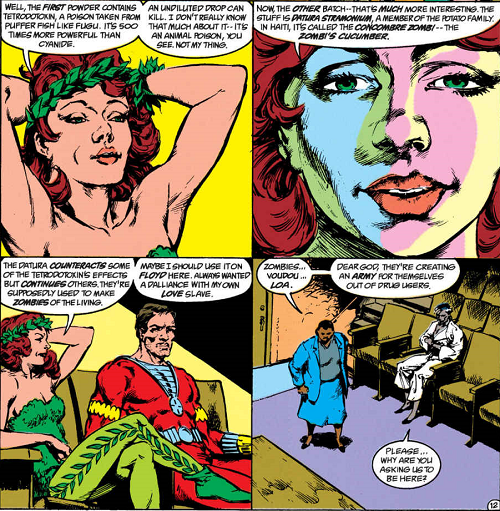#beat the backlist

When I was young and full of feelings I didn’t know how to share, when I was afraid nobody would understand me, I found a language everybody knows. Sugar, flour, butter. The comfort of a perfect cookie, the joy of a celebration cake, the bittersweet importance of chocolate. I put everything in my heart into my baking. Years later, I lost the one person who I thought would see me and love me for exactly who I am — and the magic started up again. This has always been my way of sharing what I feel. Especially when things get hard.
The Heartbreak Bakery by A.R. Capetta is a contemporary LGBTQ+ YA with a dash of magical realism as teenage baker Syd realizes crafting food is more about feelings than one might expect. Syd’s creations at work or home aren’t just an outlet or inspire the usual emotions— they’re saturated with them. Concoctions sometimes irresistible and consuming one can make sentiments under the surface rise to the top in Syd and others, having at times very intense effects.
Though I’m older than the target demographic this story is like an expertly flavored recipe with baking, passion, community, culture, and change. One of the cutest parts is also recipes for various baked goods or occasion guides that head each chapter. From simple Breakup Brownies in the beginning to more elaborate Agender Cupcakes, and Today’s Gender or A Big Gay Bakeout days it’s a fun distinctive touch. I decided to try the Get Comfy with Your Great Big Feelings Cookies because the book basically stirred up the same. Syd is a welcome addition to my list of books with agender bisexual characters.
I get big feelings anytime the subject of gender and vaporous clouds come up…
“I have to find a way to help them understand me, even though I don’t really understand them either. Having a gender? Why? Feeling like your body and who you are inside line up all the time? How? Identifying with other folks of your assigned gender as a kid, when I identified with things like extra-fluffy cumulus clouds and nebulas? What does that even feel like? I get nervous trying to explain myself sometimes. I get tired. I grow sharp edges where I didn’t think I had any. And I definitely get to the point where I just want to bury myself in baking and not deal with any of it.”
Too the Proud Muffin Bakery and its owners, staff and customers make up a diverse and resilient rainbow in the Texas capital. (Special mention to the pansexual drag queen military veteran turned barista, D.C.) Truly there are so many great passages worth marking and quoting. Including some of the cream of the crop of food related analogies I’ve read in a while. For example:
“Sometimes I come up with these little recipes … like, gender recipes. For how I want to look or feel that day.” I might be an agender cupcake, but I have to live in a world where most things have been flavored with gender. Even when I was little, I mixed and played and had fun with those flavors. I showed up to second-grade picture day in a pink skirt with neon yellow suspenders and a blue plaid tie. I made it through most of eighth grade in big unlaced work boots, black tights, and overall shorts. And then there’s my baking uniform: guys’ baggy jeans, a binder or sports bra under a fitted Tshirt and a bright sunny apron.
Or“Our motto is love comes in every flavor.”
Though for as much as I love and do praise this precious book, it’s not potentially without a little distasteful bite. This most prominently involves an event in chapter seven. There are a few things I think need examined when it comes to continuity but also consent. For the spoiler version read over here.
Honestly the entire basis of this book is that Syd does not know how the magical baking exactly works, is controlled, or always uses proper mindfulness when making something. Fundamentally, the whole aspect of magical baking does create moral and ethical questions that infuse the whole novel. The handling of such can and will be debated by readers. (Particularly in the instance I chose to highlight.) But I would still judge The Heartbreak Bakery as a delicious and inspiring LGBTQ+ YA book with an agender main character in a contemporary setting.
The Heartbreak Bakery by A.R. Capetta is available in print and digital (including audio) from Candlewick Press


One of the highlights of Japanese comics released in English in 2021, Lil’ Leo by Hagio Moto is a cute single volume women’s comic about one very unusual pet. Originally collected in 2009 the book offers eight chapters where the two-year-old cat Leo is both obviously cattish and more human. Understood by people, (not the only such cat and the gimmick treated as natural) he tries out several human activities. Slice-of-life trials of elementary school and new friends, marriage interviews, being a cartoonist’s assistant, searching for celebrity, along with craving a gourmet dish of mouse or, sulking when stuck inside on a rainy day with a litter box. Paying a little homage to famous cat GouGou by OshimaYumiko Lil’ Leo is a straightforward comic. Still one you want to read slowly to truly soak in the details and expressions of the art. All concluded with a photo diary of Hagio’s cats, one the model for Leo. It also is one of the occasions that Hagio’s work has been published in English by a company other than Fantagraphics. A dream come true for North American publisher Denpa too, released in a lovely edition. Every title by one of Japan’s comic artist treasures that finds international release is one I certainly welcome.
Lil’ Leo by Hagio Moto is available in English translated by Ajani Oloye, lettering Nicole Dochych, in print and digital from Denpa Books

“And you’ve only ever read stories about people like you, right? You’ve never met one of your
kind before now. Well, except for Beatriz,” she added. “Ain’t that so?”
“Yeah,” Esther answered reluctantly. She sensed a trap coming, but she couldn’t figure out how to step around it.
“All those stories you’ve read,” Amity said softly, pulling her hat back off her eyes by a few degrees. “Who gave ’em to you?”
“The Librarians,” Esther said.
“And who gave ’em to the Librarians?”
Esther thought hard about that one. The things the Librarians brought weren’t subject to the Textbook Approval and Research Council, since they only worked on schoolbooks, and they weren’t subject to the Media Review Committee, since they mostly did film and television. “The Board of Materials Approval?” she guessed.
Amity nodded. “And what do you think that Board wants you to believe about yourself?” She paused, but it wasn’t the kind of pause that wants an answer. “You might not have a happy ending coming to you, Hopalong. But if you come to a bad end, it won’t be on account of what kind of person you fall for. I’ve seen a lot more of the world than you have, and I can tell you upright: I’ve seen as many good ends as bad ones for your kind of heart.”
Upright Women Wanted by Sarah Gailey starts off a yarn about a dystopian fascist United States where resources and tech are so consumed by war effort and maintaining hegemony the country’s living standards have reverted to looking like something out of the Old West. In one dusty corner of Arizona, Esther Augustus has run away from a fiancé and the death by hanging of her best friend and more Beatriz at the hand of Esther’s father no less. Stowing herself away with the Librarians, who travel from town to town caring for and dissemination the proper books and other state approved materials, it’s a group of the upright sort of women Esther thinks she needs. And she’s right, about one thing. She’s found her kind of people.
Generally, I like queer westerns, be those takes on the past or speculative futures. Transgressive librarians likewise are golden. Though, Upright Women Wanted if I might use a quaint phrase, as this novella has a seemingly endless supply of them, feels rather like a lick and a promise.
Readers are left flat in the middle of personal and national events. As the latter is given next to no exposition (so many questions), character driven this tale is. Two of the Librarians Leda (from an organized crime family in the Northwest) and Bet (from the military Central Corridor), truth be told in a long-term relationship, by all outside appearances don’t come off seemingly as anything more than Librarians who ride together. Plus turns out a good quality Librarian has parcels that include smuggled materials and people as part of the resistance. Though when it comes to the goods on a guilt-stricken Esther, her dad’s powerful as a Superintendent, the fiancé Silas is little more than a name, Beatriz a memory barely cold in the ground and there’s more life-threatening situations and death to be dealt. Yet, the immediate focusing subject is Esther’s attraction to an Apprentice Librarian Cye (from the manufacturing Northeast that uses child labor). Cye tasked with acclimating Esther on the road has a direct personality, as they also make it clear to Esther:
“I’m they on the road and she in town. You can take time getting used to they on the road, but if you forget about she when we’re in town, you’ll have to learn how to think around a bullet.”
People cope with issues and trauma differently but, Esther’s attraction to Cye coming up at once and permeating even as chatter in certain situations had me so off kilter reading. I further double checked this title’s categories to make sure I hadn’t missed romance mentioned. Not that expecting such a strong element may help much what with the way the pacing is more a stampede.
Of course, there is a connection between death and desire in the text. Esther, the pansexual protagonist, is convinced by all the stories, education, deeds, and principals she knows that there’s only one sort of end for anybody who is somebody different. Breaking out, finding real refuge, yourself and community, those steps towards making a genuine life, and resistance even under long shadows is where the heart of this story really rests. Such is where I bet readers can feel and love this little book and its mere existence (weaknesses though it may have) too.
Upright Women Wanted by Sarah Gailey is available in print and digital (including audio) from Tor Books
Cinnamon Gardens by Shyam Selvadurai

“‘Knowledge is a weapon of defense, an inner fortress no foe can raze.’” Arul, seeing the puzzled look on Balendran’s face, gestured to the letter. Then Balendran understood what he meant. He was talking about the knowledge of servants, their awareness of what went on in a house. Pillai was a servant par excellence, never supervised, his household accounts never checked, so implicit was his father’s trust in him. Yet that very same Pillai had acted on his own conscience and had, all these years, maintained contact with Arul. He had flagrantly defied his master’s dictates, ignored the vow he took in front of the family Gods.
Arul was looking at him, his eyes bright with the understanding that his brother knew what he meant. He beckoned Balendran close to him. “You are a fool, Bala, a damn fool.” Then he quoted the Tirukkural again. “’Only the learned have eyes— others two sores on their face.’”
Balendran nodded, thinking his brother was talking about his ignorance of Pillai’s insubordination.
Arul shook his head to say that Balendran had not understood. He gripped his arm tightly and drew him forward again. “You have been blind to the reality of life, Bala. You have spent your whole life living by codes everyone lays down but nobody follows.” It was the longest sentence Arul had uttered since his coughing began and he lay back on his pillow, drained.
Cinnamon Gardens by Shyam Selvadurai is a lush historical fiction novel set in Ceylon (Sri Lanka) in 1927. The country then under colonial British Imperial rule, the story is swirling with personal and political developments, while bringing to life the period through two characters part of an affluent Tamil gentry family in the capital city of Colombo.
Annalukshmi a lover of English literature and at 22 a teacher at a prestigious Mission School, is a “new woman” with more interest in her career and improving women’s rights than marriage. Her Uncle Balendran, 40, and the dutiful younger son of a Mudaliyar has maintained and grown the family’s wealth while bringing some modest reforms complimented by a family of his own with a wife and grown son, the latter off in England. Yet, despite their privileges and accomplishments Annalukshmi and Balendran struggle with the various expectations, duties and limitations of family and society plus their own conflicting ideals and yearning for certain freedoms. Annalukshmi very much wanting to be a regarded more as an equal, no less because she is not a man, or not English. Balendran, as one of the terms of the day posited it, recognized in his younger days a “sexual inversion” in himself. Educated in England he met a love of his life while in London. A relationship that came crashing to an end once his father became aware of the true nature of the “friendship” with another man. Balendran’s disposition as he accepts it though otherwise kept in confidence. But a gay Uncle is not the only bit of familial drama or secrets that wind their way through the novel. There’s Balendran’s banished older brother and well, to say much more spoils it.
Shyam Selvadurai, a gay man himself originally from Colombo, won a Lambda Literary Award in Gay Fiction along with literary magazine Books in CanadaFirst Novel Award for his debut titled Funny Boy in 1994. That title a coming-of-age tale tackling issues around sexuality, ethnicity, and class. Cinnamon Gardens his sophomore effort in 1998 delivers much of these same themes adding feminism. Combined with his adeptly human characters experiencing an even early time of Sri Lankan history effusively conceived with thoroughly researched historical details. Like the neighborhood it takes for a title (suggested by Selvadurai’s partner), Cinnamon Gardens is a truly beautiful book not just in the writing but, regarding the “greatness and littleness” when it comes to people.
Cinnamon Gardens by Shyam Selvadurai is available in print from Hachette Books
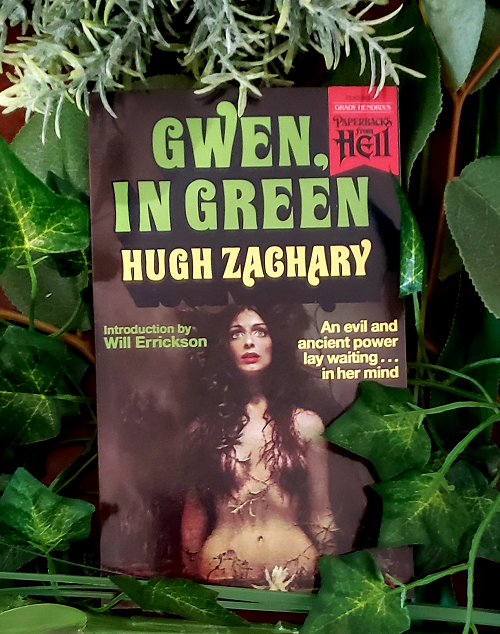
She understood all of it now. Since the clearing operation had been completed, bringing a temporary lull in the mass pain, she’d had time to stand in the edge of the shallow water and communicate. She was more and more a part of it. She was able to submerge herself in it and know true peace. But when the canal digging began she screamed aloud, the sound piercing the unpeopled woodlands and startling birds and a curious squirrel.
She watched them from the island. They were far across the marsh. There was no way to reach them and inflict pain in return. There was only suffering. And suffering could be momentarily eased in only one way. She drove down the island to the pier, saw some of her former friends, and issued invitations: It began again and, her soul hungering for release, bloomed quickly into what ordinary people would have considered a bull market in promiscuity. However, she was no ordinary person. To her had been revealed a Utopia, a heaven of coexistence. That communication was mostly one-way was a problem. She could not explain. And unable to explain, she soon lost the conviction of her own knowledge and shared the incomprehension. It was incredible that such pain could be doled out in such mass quantities. Yet it continued.
Gwen in Green by Hugh Zachary is a sexy revived eco-horror pulp paperback beget from the brutal transformation of 1,200 acres due to construction of the Brunswick Nuclear Plant in North Carolina during the early 1970s.
Its title character twenty-seven-year-old Gwen Ferrier in childhood exposed to her mother’s colorful sex life along with being bullied for it develops a lot of negative feelings around sex. Yet in adulthood she’s managed somewhat decent conjugal relations over the seven years of marriage to her husband George. That is until moving into the couple’s new secluded home on a marshy woodland island begins an obsession with vegetation. At the loss of one of their dogs, knowledge to include the variety of poisonous plants along with fungi. (Sort of a spoiler… but deadly poisoning by the iconic Fly Agaric for humans is exceptionally rare.) Surrounded by Venus fly traps (which btw you should not feed hamburger), experiencing violently grisly nightmares and connection to a peculiar life force drive not only Gwen’s demand for overwhelming sex but, weaponize it towards revenge on behalf of all things green.
This novel among a large list of its author’s works personifies not just nature but a decade. Springing off the likes of plant experiments by Cleve Backster, accompanied by lush descriptions of Carolina barrier island ecology, a perfect setting in summer for lots of bare skin shedding of hotpants and swimwear, downing lots of alcohol in days that loved the double entendre of cocktails like the Slow Screw, all set to tracks such as the Don Ellis orchestra Turkish Delight. Celebrating the period too, the introduction by vintage horror enthusiast Will Errickson refers to some of the defining erotic films of the time. Among these Emmanuellea French art house softcore porn offering out the same year as Gwen in Green. If one is familiar this reference might allude to Gwen’s powerful sexuality and also mentioned journey of increasingly illicit sexual acts. Though Errickson does little to specify, I feel advising that young characters in sexual situations is also something Gwen in Green has in common with the novel version ofEmmanuelle. Though the latter makes a treatise out of it instead of some juvenile fantasy lived out on a page. Such writing tends to make me long for a stiff drink though. Oh, and there’s stiffs to hide and turn up too, not to be forgotten this is a horror tale.
Further many of the supporting characters in thought or deed are blazingly racist and sexist. Reflecting on the characters instead of the author though it may, it’s still something to wade through. Readers might pick out a rebuke or view characters in an unfavorable light as fate darkens. Revenge thrillers take mood. Still, I disagree about all the so dated “momentary offenses” being “mild” or merely “uncomfortable notions”. I fail to see at least how an argument of writing for an often-uncritical mass audience somehow requisites certain cultural references— because there is still choice supposedly among many possibilities. There is also space to work in between challenging the status quo and strengthening it. Plenty of new and older books do reach the heights of bestsellers and literary canon uncritically imbued with the anxieties, attractions, and ails of society. But context helps one understand the why, not a fact to minimize or handwave in defense.
Pulpy and vintage Gwen in Green may be, but a story that still cries out in part because environmental issues and knowledge have only grown since it was written. Gwen as well an example of a potent archetype the like that mainstream pop culture still seems unsure what to do with. Even so, it is a shame that such an vivid novel wasn’t weeded through a bit so to speak. Otherwise, it would be a true classic of eco-horror, and much more readable near half a century later.
Gwen in Green by Hugh Zachary is available in print and digital with a new edition including the original cover painting by George Ziel from Valancourt Books
Just remembering the time Poison Ivy was part of the Suicide Squad. It’s been said if you want to know some of the things on the minds of people in the US during any given period you can look at its Superhero comics. The story of deadly laced heroin and cocaine gripping citizens of New Orleans in issue #39 on March 1990 reflects another narrative about drugs coupled with the also long-lasting craze over Wade Davis and vodou in the 80s.
Ah… tropane alkaloids. Datura is a genus of plants to contain such, and species further conjure witchy connotations with many common names, some capturing the imagination or notice back to ancient times. Funny enough D. Stramonium native to parts of the Americas is practically a global weed today. In truth there are a lot of plants around an average person probably doesn’t give a second look to but have sides that can be less pretty or require some respect. An annual or perennial depending, along with varying toxicity (PSA don’t go experimenting) I find Daturas attractive plants.
Suicide Squad #39 Written by: Kim Yale, John Ostrander, Pencils: Luke McDonnell, Inks: Geof Isherwood, Colorist Carl Gafford, Letterer: Todd Klein, is collected in Suicide Squad Volume 5 Apokolips Now
Post link

Our bodies wailed and writhed, we itched with restlessness. We walked around like large irate animals in our parents’ houses, shouting for something that could still the strange swells, but wherever we looked all we saw were ready-made Female Models. We shut our mouths and closed our eyes, refusing to accept the inevitable. It was instinctive, an ember in the chest: anything could happen to us— just not that. So we fled to the greenhouse, turned away from the world, sough comfort in the earth and the flowers and the insects.
Kim, Momo, and Bella are at the hellish age of fourteen, longtime best friends and increasingly harassed and bullied at school. They still have a sanctuary though in the greenhouse at Bella’s. One day planting a strange seed that grows an unusual orchid like flower with sweet smelling nectar, they discover its power to physically turn their bodies into boys for a night. Embarking on a game that will not only test their friendship but, for one of them is much more serious.
Garnering prestigious awards and nominations, both banned and taught in schools along with glowingly recommended in LGBTQ+ lists, this was one of those dark YA fairytale-like books in a magical realism vein that I very much wondered what the author has to say about it. Fortunately, a Publishing Perspectives interview with Jessica Schiefauer from 2014 gives context. As the perspective of the English translator Saskia Vogel.
In the simplest terms in an earlier interview with TT News Agency in 2011 Schiefauer also puts it “This book doesn’t investigate what it is to be a boy,it investigates what it is not to want to be a girl.”And “I wish we didn’t have to be so strongly defined by our genders. I think that is the key for Kim, to just be Kim and not have to choose.”
Similarly, the Swedish title of Schiefauer’s novel is worth noting in that Pojkarnatranslates to ‘The Boys’. Several other translated editions echo this but there is sometimes variation with a different title such as Girls.Yet this went further when the film adaptation was screened internationally in 2015 using ‘Girls Lost’ in English. Though excerpts of the novel translated by Saskia Vogel first appeared in Words Without Border in 2014 using ‘The Boy’s’, the full novel’s English edition that followed years later in 2020 ties itself in name to the film. While further setting itself apart rejecting the largely subdued palates of many other editions by sporting a screaming pink neon cover by Anna Zylicz with illustration of hands holding and reaching for a flower, white text wrapping in a circle.
But if we shouldn’t judge a book by its cover, what is it about the material inside that has proved so intriguing? As mentioned in this case the novel has not just appeared in many languages but alongside a live-action adaptation. And the film’s interpretation is additionally interesting in that it led to the source material being analyzed more as a trans or queer narrative. (That categorization or not as the author says is something she’d wish take a back seat to discussions of gaze . To this broader point, I’d say the way people are perceived and therefore treated and conditioned, everything for that matter, can be immensely messed up.)

The director Alexandra-Therese Keining in only her second film and with a novice cast doesshift and give more space to certain issues of both femininity and masculinity, gender identity and performativity, along with sexuality. (Though the book is more explicit in some respects, enough it was as I mentioned banned in some schools in Sweden). This has a particular effect on the characterizations and relationships and the complexity.
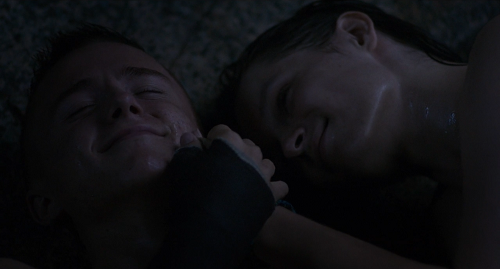
Tony a troubled punk on the exterior is an opportunity to show how (toxic) masculinity can also be restrictive and damaging. (Here too is where I’d like to point out that boys do still face messages about their bodies and value along with social expectations as well.) During Kim’s nighttime excursions they form a connection, that is not without sexual tension. Unfortunately the powerful bad boy mold can be flawed or an ill fit, and while overdue emotions and vulnerability surface, volatility reveals itself too.
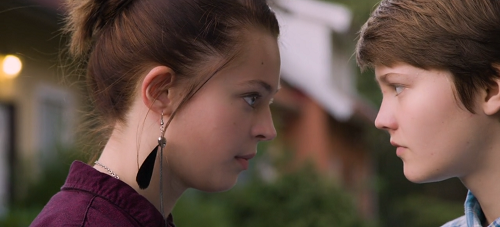
Momo and Kim as in the book share complex feelings of more than friends. As the story progresses Momo is acutely scared for and desperately tries to hold onto Kim. Kim confides more in Momo and a scene between her and Kim that markedly sticks out in the book is changed for the film.
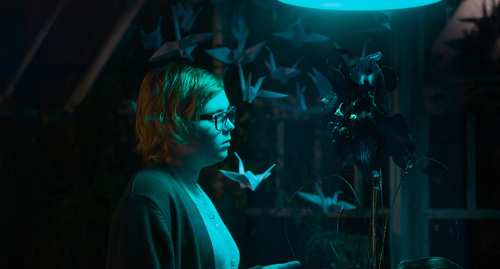
Bella who quickly tires of the nighttime outings is another example of “ways of contending with the term “gender”.” Misogyny is the topic that exists at the forefront of the novel. Bella is the target for Schiefauer’s recreation of an assault she witnessed in her youth. This is too a coming-of-age story and Bella as well reflects traditions of nature and the (divine) feminine. The metaphors with the greenhouse, and the special flower she chiefly looks after along with the friction that develops between her and Kim, is unsettling. As events also involving Momo near the end. No one despite their form can be free from violence or trauma. Though the book carries on to a different end point than the film and both are very open to interpretation.
Between its mediums I honestly prefer the film as Keining,who has become known for work with LGBTQ+ themes, takes up a center focus on certain subjects in contrast to the book. Yet, it can be argued as still continuing a binary and essentialist atmosphere. The book relies on a dichotomy that can undermine the nuance that does exist. I think it can be very challenging to craft a story like this with a lens thru identity, gender, and fluidity focused on the circumstances of young people growing up that won’t give some misgivings about what is trying to be said. Each individual navigating identity, sexuality, gender and growing older are experiences that remain regardless. Girls Lost seems to endure in the consciousness and it raises questions because of this. Yet for a story utilizing gender transformation to say something about identity and perception, it feels strangely somehow less world shattering going about it.
Girls Lost by Jessica Schiefauer is available in English translated by Saskia Vogel, in print and digital from Deep Vellum
View a trailer for the film adaptation directed by Alexandra-Therese Keining

poetry (let’s say) the dream is all we still have in this time of crisis…
Born in the far south of the Democratic Republic of Congo, Fiston Mwanza Mujila is a writer and educator who over the last several years, among other honors, has gained prominence for his debut novel Tram 83. (English edition trans. Roland Glasser.) Yet, with an oeuvre that is varied, besides short stories and plays, poetry is the form where he began. A backbone where it might be argued Mujila is also at his most. Readers indeed can thank Asymptote Journal in previous years for publishing some of this poetry in English translation by J. Bret Maney. Now not just excerpts butthe whole collection of The River in the Belly is offered from indie publisher Deep Vellum through imprint Phoneme Media. The Congo River, history, violence, exile, nature, man, and bible verses all saturate punchy, jazzy abraded ‘solitudes’ as quick but tugging as a single line or flowing across pages. With a complexity too, as much of Mujila’s writing, the back includes an assortment of notes. An especially helpful aid with the Lingala and Swahili spattered across the work. Those lingua franca among the six languages, Mujila, writes in. Too, the collection originally appeared in a bilingual French/German edition (trans Ludwig Hartinger) in Austria where Mujila has lived for many years. Like in the verve of different languages, some works may survive on the page fine, but I imagine Mujila’s verse best alive when at a poetry slam. However, thanks to the Transnational Literature Series at Brookline Booksmith you can further experience his recitals during a celebratory event of the collection with two of his translators and editor David Shook.
The River in the Belly by Fiston Mwanza Mujila is available in English translated by J. Bret Maney, in print and digital from Phoneme Media
[ID: Illustration of Frog wearing a brown jacket and beige striped pants gesturing towards the sky with his other arm around a sleepy toad rubbing one eye wearing white pajamas with clover standing on the front porch of toad’s house.]
“And it means that we can begin a whole new year together, Toad. Think of it,” said Frog. “We will skip through the meadows and run through the woods and swim in the river. In the evening we will sit right here on this front porch and count the stars.”
—from “Spring”inFrog and Toad Are Friends by Arnold Lobel
Celebrating the start of spring by reading stories with one of the beloved relationships in US children’s literature, Frog and Toad.
Post link

In any case, they wouldn’t’ be able to appease the brutal awakening in her body. It was more of a psycho-sentimental awakening that shocked her. Masturbation was not her thing. She always felt the need for physical content. And as Dominique’s body was similar to her own, it allowed her not only to rediscover herself, but also to provide her with a certain balance. This forbidden relationship was like a drug, and she knew that its sudden withdrawal would make her completely crazy.
Emilienne, the in many ways privileged protagonist of Angèle Rawiri’s The Fury and Cries of Women, has gained repute involved supporting women’s causes and a successful career eclipsing that of her husband, Joseph. But suffering and feeling a failure in her social and personal life, especially when it comes to marriage and the maternal, her future and life becomes hazy, as she both compromises on and defies the roles society, family, and herself set for her.
Today with one able to peruse the works of several Gabonese writers, this older novel, translated by Sara Hanaburgh, I chose in part for its main character. Emilienne is a defiant woman who at one point finds solace in the arms of another woman. Indeed, even the word lesbian is on the page. Though this use is not in a positive scene, negative shifts further mirrored earlier in the writing around the relationship. While Rawiri‘s last novel of three, notable for more greatly broaching several subjects, including the taboo, it is nonetheless not one where breadth or sensitivity is always reflected. A more detailed evaluation involves a long tangle of quotes and spoilers you can find here.
For a novel classed and immersed in its protagonist’s convictions around women’s issues, the varieties therein of feminism and individual meaning of such in action and conflict, the writing neglects to fully defy certain (personal?) beliefs. Is it at the same time too much for 1989 yet radical perhaps? Comparing some other contemporary works with intimate relationships between women by other African writers (though an author might disagree with the perspectives of academics, readers, ect about their works or, or hold real life prejudices not clearly reflected in their work) the answer is it’s complicated— especially when works and concepts cross the globe. Today over three decades later, the matter is still a longstanding taboo causing stigmatisation. Though in 2020 Gabon did pass legislation to decriminalise homosexuality revising its laws, made formally illegal just a year previous. Unsurprisingly this revision decried by religious leaders. As well religious or spiritual themes appear in Rawiri’s novel. One instance is around another still relevant and big, taboo topic of the 1980s, HIV/AIDS. (FYI if you follow the link found in the previous paragraph the passage is quoted.)
While an example of the multiple way Rawiri also introduces parallels in the dichotomy of African vs Western, tradition vs modern, once more the writing is not evenhanded. Again, one must ponder the same question of time, culture, and literary canon. Too while the ending of the novel, I am not going to describe, can be interpreted as good for its protagonist, it is not necessarily well-written or without a dual edge.
However, what cannot be argued is Rawiri made her mark in history during a short writing career as her country’s first woman novelist in the 1980s, an influence inspiring more authors. Also, to her credit The Fury and Cries of Women, despite weaknesses, is writing that can still hold interest and is worth sitting with.
The Fury and Cries of Women by Angèle Rawiri is available in English, translated by Sara Hanaburgh, in print and digital from University of Virginia Press

Syzygy? Androgyny? I’m no man and I’m no woman. Who needs gender anyway? I just want to get out of this place, to be on my own.
I’ve got no desire to see the collapse of humankind or the end of the world. I just want everyone to enjoy their lives. That’s why I came here — to a different time stream, a different planet, a different universe.
A book setting SFF community abuzz in April 2021 was Terminal Boredom, an English translation of seven, decades old, very dark speculative fiction short stories by Suzuki Izumi. Imaginings that are nostalgic, melancholy and sometimes queer offer readers peeks an extreme matriarchal society, overpopulation and cryosleep, scattershot appropriation of pop culture and humanity’s influence through at the edge of the universe, limitations of the virtual world, transformation and times effects, a pair of lovers caught in fears of an interplanetary war, and in the title story ennui of youth and dangerous numbness in a media saturated world. Told with psychological emphasis writing that can carry forward to today, some of the overreaching themes touch on gender or are about (dis)connection between people or the past.
Suzuki too an actress and model I want to say the picture used on the cover is one of her nude, dated to the early 70s and found (possibly among other places) in a photo book “Izumi, this bad girl” with photography by Araki Nobuyoshi (who is a whole other matter). Described as an incandescent creative by some, it’s a notable development for examples of her work to be translated to English so many years after her untimely death in 1986 due to suicide. Though, readers in this book won’t find an introduction or afterword to provide such details about her life or, context to her writings. An odd choice when Suzuki has been all but unknown in Anglophone circles, and even in Japan often filtered through lenses of other figures around her. Six different translators were also tasked to bring this collection of stories, chosen from a larger Japanese volume to English. If one finds appeal, know Verso also has plans for another.
Terminal Boredom by Suzuki Izumi is available in English translated by Polly Barton, Sam Bett, David Boyd, Daniel Joseph, Aiko Masubuchi and Helen O'Horan, in print and digital (including audio) from Verso Fiction
Amid a lot of difficulties my new year’s resolution for 2022 is to stick to what’s on my shelves. I did well last year in trimming down my TBR into something manageable. So, the Beat the Backlist challenge remains a good fit.
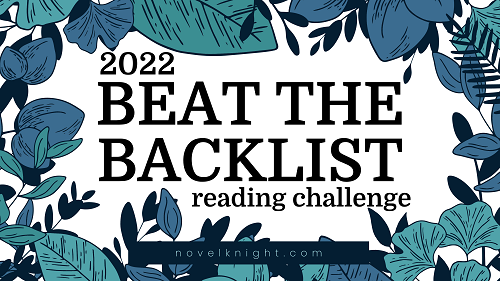
And since I like to try something new too, this year adding the simple Monthly Motif Reading Challenge by Girlxoxo. (They also have a keyword and book award challenge.)
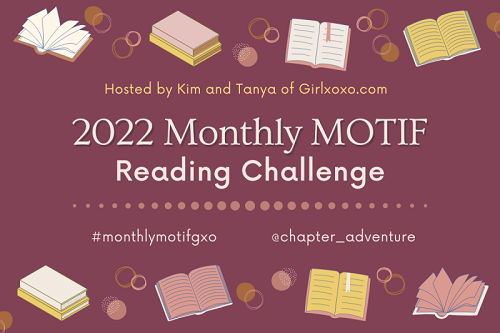
Wishing everyone great reads across the year!

October and in similar fashion to last year the call is out to do your bookish holiday shopping early. Support your local bookstores and avoid disappoint while about everything to do with getting books among other consumer goods in your hands is quite simply ******. Pre-orders as always important too.
Also being spooky season, I wrote a post on Yamashita Tomoko’s The Night Beyond the Tricornered Window. Know this is likely all I’m going to say on this title. While I could absolutely engage more or make a unique pitch on it now that it’s getting more attention thanks to adaptations, Tricornered Window is one of those titles that is a challenge to write about even though I’ve done so over the years. But more than that I’ve got scars from my time in the English-speaking anime/manga community. So, I’ve tried my best to move on. Though I still hold my love for some titles like this series.
And another book series getting better treatment and one I’ve loved even longer is DUNE. The new movie is also finally out after all the pandemic delays. So at least there is entertainment as the days darken.

Read for October:
Don’t Whisper Too Much and Portrait of a Young Artiste from Bona Mbella by Frieda Ekotto
Last Words from Montmartre by Qiu Miaojin

I’ll tell you one more thing I remember, from when we were both in bed, curled around one copy of his thousand-year-old poetry.
“Hu gæstlicbið—How ghastly it will be?” I estimated.
“No, ‘gæst’ means 'spirit’. Flaescandgæst, flesh and spirit.”
“Oh! So, how ghostly it will be…” I cheated and looked at the translation, “…when all the world’s wealth lies waste.”
“Not quite. Gæstlic is spiritual.”
“Howspiritual it will be?”
It didn’t make any sense, but he held me very close.
“When all the world’s wealth lies waste,” he finished.
— from The Ruin by E. Saxey
An anthology from British Indie publisher of speculative fiction Nyx, kickstarted late 2019 and released in 2020 right as the world was preoccupied, Unspeakable A Queer Gothic Anthology may have been one of the many such releases that were missed. Containing 18 short tales including ghosts, vampires, werewolves, other creatures of lore, the occult along with all too human murder, madness and turmoil queering the Gothic genre which has been ripe for such readings and study. A solid anthology with a cornucopia of rep that should also have something to please one’s tastes be it monstrous loves, mysteries, macabre horror and many a great house, though not necessarily a woman fleeing from them. Don’t let its rather bright rainbow cover with a drawing of a human skull crowned with flowers confuse you, this is a book matching well with the autumn season as days darken and a chill sets in. And to fill one’s reading needs for more evenings 2022 will see a second volume entitled Unthinkable, bringing more gothic delights.
Included:
‘Let Down’ by Claire Hamilton Russell
Rapunzel retelling.
‘Moonlight’ by Ally Kölzow
An abandoned house on a stormy night where a particular ghost in white still haunts.
‘An Account of Service at Meryll Point’, as recollected and set down by C.L.
After the master of the house dies what secrets are in the locked tower room none could enter.
‘The White Door’ by Lindsay King-Miller
A con woman takes a position at a castle with a widowed Duke.
‘Doctor Barlowe’s Mirror’ by Avery Kit Malone
An assistant to a scientist working on a bizarre and dangerous looking glass.
‘Laguna and the Engkanto’ by Katalina Watt
Inspired by Filipino folklore.
‘The Moon in the Glass’ by Jude Reid
Tragedy as a new bride suffers growing hysteria after her sister-in-law is found drowned on the former’s wedding night.
‘Brideprice’ by S.T. Gibson
Dracula inspired piece from the perspective of vampire brides.
‘Lure of the Abyss’ by Jenna MacDonald
The beleaguered captain of a boat and a sapphic mermaid.
‘Hearteater’ by Eliza Temple
A once magnificent house fallen to disrepair with its lonely lady and a werewolf on the prowl.
‘Quicksilver Prometheus’ by Katie Young
An artist renting a room in a seaside town from a woman who experienced family tragedy but, he may not be the only occupant.
‘Homesick’ by Sam Hirst
Bookish ghosts.
‘Rodeo’ by Ryann Fletcher
A young woman with an abusive minister father becomes enamored with a rider at the rodeo who exudes carnality.
‘Lady of Letters; or, the Twenty-First Century Homunculus’ by Heather Valentine
A digital spectre for the internet age.
‘Taylor Hall’ by Jen Glifort
Repressed feelings and another haunted house, but this one less foreboding and more a great home.
‘The Ruin’ by E. Saxey
A dark and unnerving m/m romance that starts at a book club for apocalyptic fiction.
‘The Dream Eater’ by Anna Moon
Asexual protagonist meets genderless life-draining demon.
‘Leadbitter House’ by Mason Hawthorne
An inherited haunted house story that also explores in a gory manner the body and gender.
Unspeakable A Queer Gothic Anthology edited by Celine Frohn is available in print and digital from Nyx Publishing
Don’t Whisper Too Much and Portrait of a Young Artiste from Bona Mbella by Frieda Ekotto
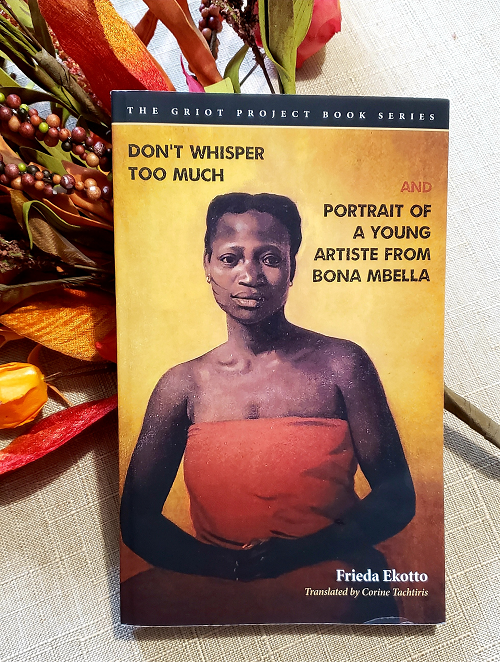
“Everyone knew what children, young girls, women had to endure. They kept silent, even though they were bursting with remorse. They told themselves, “Let the secret be kept as long as the ancestors shall live.” But every secret, whatever it may be, is uncovered someday.”
Don’t Whisper Too Much is a novel first published in 2001 (though at under 100 pages more regarded in English as a novella) by a Cameroonian lesbian author whose queer work was the first such fiction to portray African women-loving-women positively.
Yet this book surprisingly put me off a bit. Perhaps, I am simply culturally ignorant of context since while I know a good deal about French literature, I cannot claim the same about Cameroon where author Frieda Ekotto was born and too where she has set these stories. Maybe my literacy is slipping as I was rather preoccupied with the generational patriarchal cycle depicted that link these women with abuse. Similar to points in the introduction by Lindsey Green-Simms, I think the nuggets found here are about silence and confinement— the many methods of oppression and resistance how one may or may not engage with such. The work is also interesting in the way it’s written. Rhythmical, different narrators, voices through texts in text, translated expertly to English in 2019 by Corine Tachtiris. Yes, writing quite a long time coming both in original publication and new editions.
Portrait of a Young Artiste from Bona Mbella made up of short vignettes originally published in 2010, and the second part of the book, may be more approachable in style though, colloquial. These pieces written in majority from the perspective of a young woman named Chantou.But again, neither light reading for what is a small tome.
I’d propose these works for those interested in ‘path-breaking’ literature.
Don’t Whisper Too Much and Portrait of a Young Artiste from Bona Mbella by Frieda Ekotto, is available in English translated by Corine Tachtiris, in print and digital from Bucknell University Press
[Don’t know what I’m talking about? EXPLANATION LINK HERE]
One of my (many) 2021 goals was to participate in the Beat the Backlist 2021 challenge, because I’m a simple person: I see book bingos, I want in. I chose the 24-square bingo to start off easy, and I finished it on 22nd July, so I of course went right in to the full 52-square bingo with bonus prompts included… After a bit of struggling, I finished it yesterday! Challenge complete, yay!
Here’s the completed bingo card, and under the cut you can find the list of what I read:

* Means the book doesn’t have an English translation
If a translator isn’t named, it’s because I read the book in the original language regardless of how it appears here!
- More than one author:Alone Together: Love, Grief, and Comfort in the Time of COVID-19 - Edited by Jennifer Haupt –> 2.5/5
- Dragons OR lizards: Tales from Earthsea (Earthsea Cycle #5) - Ursula K. Le Guin –> 3/5
- It’s on a ship!: Code Girls: The Untold Story of the American Women Code Breakers Who Helped Win World War II - Liza Mundy –>4/5
- Purple cover: Strange Planet (Strange Planet #1) - Nathan W. Pyle –>3.5/5
- Set in a major city:Brexit Romance - Clémentine Beauvais –>3/5
- Book you forgot you had: Loki: Where Mischief Lies - Mackenzi Lee –>3.5/5
- Caused a major book hangover: Tooth and Claw - Jo Walton –>2.5/5
- Multiple points of view: Tyll - Daniel Kehlmann (Transl. Isabel García Adánez) –>3.5/5
- Book you’re giving another chance: Scottish Myths & Legends - Rosemary Gray –>3.5/5
- Quest to find lost/hidden object: 84, Charing Cross Road - Helene Hanff (Transl. Javier Calzada) –>3.5/5
- Chapter title page has art: Jane Austen at Home - Lucy Worsley –>4.5/5
- Kept you up late reading: The Art of Showing Up: How to Be There for Yourself and Your People - Rachel Wilkerson Miller –>3.5/5
- Picked by a friend/trusted reviewer: The Switch - Beth O'Leary –>4.5/5
- Non-human character: The Travelling Cat Chronicles - Hiro Arikawa (Transl. Philip Gabriel) –>5/5
- First line is less than 10 words: Bringing Down the Duke (A League of Extraordinary Women #1) - Evie Dunmore –> 3/5
- Banned book:The Kiss of the Spider Woman - Manuel Puig –>2.5/5
- Cover features your favourite colour prominently: Kiki’s Delivery Service (Kiki’s Delivery Service #1) - Eiko Kadono (Trans. Rumi Sato) –> 3/5
- All about music: Player (Red Lipstick Coalition #2) - Staci Hart –>3/5
- Character lets out a breath they didn’t realize they were holding: How to Fail at Flirting - Denise Williams –> 3.5/5
- Genre you never/rarely pick up: Homegoing - Yaa Gyasi –>5/5
- Standalone:Evelina - Frances Burney –>3/5
- Lost royalty: The Tyrant’s Tomb (The Trials of Apollo #4) - Rick Riordan –>3.5/5
- Cover with your country’s flag colours: Tres sombreros de copa - Miguel Mihura –> 2.5/5 *
- Written in letters or diary entries: Lady Susan - Jane Austen –>4/5
- Book centered around politics: Les Enchantements d’Ambremer (Le Paris des Merveilles #1) - Pierre Pevel –> 2.5/5 *
- Features a carnival or a circus: Johannes Cabal the Necromancer (Johannes Cabal #1) - Jonathan L. Howard –> 3/5
- Snake on the cover: The Tower of Nero (The Trials of Apollo #5) - Rick Riordan –>3.5/5
- On the Indie Bestseller list in 2020 or earlier: Clanlands: Whisky, Warfare, and a Scottish Adventure Like No Other - Sam Heughan & Graham McTavish with Charlotte Reather →3.5/5
- Historical with a twist: The Gilded Wolves (The Gilded Wolves #1) - Roshani Chokshi –> 3.5/5
- Character has a dream scene: The Paris Secret - Karen Swan –>2/5
- Set in autumn: The Goddess Test (The Goddess Test #1) - Aimee Carter –>2.5/5
- Based on non-Greek/Roman mythology: The Kane Chronicles Survival Guide (The Kane Chronicles Extra) - Rick Riordan –> 2.5/5
- Non-binary protagonist: Unmasked by the Marquess (Regency Impostors #1) - Cat Sebastian –>3.5/5
- A book with illustrations: Camp Half-Blood Confidential (The Trials of Apollo #2.5) - Rick Riordan –> 3.5/5
- WTF plot twist:Every Heart a Doorway (Wayward Children #1) - Seanan McGuire –> 4/5[Review]
- Second book in a duology:This Coven Won’t Break (This Witches Don’t Burn #2) - Isabel Sterling –> 3.5/5
- Non-fairytale re-telling: The Penelopiad - Margaret Atwood –>4/5
- From your 2020 backlist TBR: Diary of a Newlywed Poet - Juan Ramón Jiménez –>2.5/5
- Book where the woods/forest are important: A Midsummer Night’s Dream - William Shakespeare –> 3/5
- Black and white: So You Want to Talk About Race - Ijeoma Oluo –>5/5
- Novella:The Haunting of Tram Car 015 (The Dead Djinn Universe #0.7) - P. Djèlí Clark –>3/5
- Person on the cover: The Real Deal - Lauren Blakely –> 2/5
- Anthology:Four Fumbling Fairy Tales - Lia London –>3/5
- Has a map: Making a Tinderbox (The Tinderbox Takes #1) - Emma Sterner-Radley –>2/5
- Book about bones OR “bone” in the title: Down Among the Sticks and Bones (Wayward Children #2) - Seanan McGuire –>4/5
- Good book, bad cover:La tesis de Nancy (Nancy #1) - Ramón J. Sender –> 3.5/5*
- Brings out the geek in you:El infinito en un junco - Irene Vallejo –> 5/5 *
- Bought it for the cover:Flame in the Mist (Flame in the Mist #1) - Renée Ahdieh –> 3/5
BONUS PROMPTS:
- Book written in verse: Love that Dog (Jack #1) - Sharon Creech –>3/5
- Includes a 2nd person POV: If on a Winter’s Night a Traveller - Italo Calvino (Transl. Esther Benítez) - –>2.5/5
- Author has a book releasing in 2021: Night and Silence (October Daye #12) - Seanan McGuire –>3/5
- Mentions a pineapple: Convenience Store Woman - Sayaka Murata (Transl. Marina Bornas) –>3/5
Not bad, huh?
I didn’t write reviews, but I’m more than happy to talk about any of these books if you’re curious so don’t hesitate to reach out!
Did you participate in this challenge too? How did it go?
[Don’t know what I’m talking about? EXPLANATION LINK HERE]
One of my (many) 2021 goals was to participate in the Beat the Backlist 2021 challenge, because I’m a simple person: I see book bingos, I want in. I chose the 24-square bingo to start off easy, and I’ve already finished it! Under the cut you can see my complete bingo card and the list of books I’ve read.
And if you thought this was the end of it, you thought WRONG: I downloaded the 52-square bingo right this morning and tried to complete the maximum numbers of prompts with what I’ve read so far this year, because I might as well do things the right way. Right now the full challenge is 65% done, according to my StoryGraph progress bar, so I’m right on schedule to finish it! Yay!

* Means the book doesn’t have an English translation
If a translator isn’t named, it’s because I read the book in the original language regardless of how it appears here!
- WTF plot twist: Every Heart a Doorway (Wayward Children #1) - Seanan McGuire –> 4/5[Review]
- Kept you up late reading: The Art of Showing Up: How to Be There for Yourself and Your People - Rachel Wilkerson Miller –> 3.5/5
- Set in a major city: Brexit romance - Clémentine Beauvais –> 3/5
- A book with illustrations: Camp Half-Blood Confidential (The Trials of Apollo #2.5) - Rick Riordan –>3.5/5
- First line is less than 10 words: Bringing Down the Duke (A League of Extraordinary Women #1) - Evie Dunmore –> 3/5
- Good book, bad cover: La tesis de Nancy (Nancy #1) - Ramón J. Sender * –> 3.5/5
- Second book in a duology: This Coven Won’t Break (This Witches Don’t Burn #2) - Isabel Sterling –> 3.5/5
- Multiple points of view: Tyll - Daniel Kehlmann (Trans. Isabel García Adánez) –> 3.5/5
- Standalone: Evelina - Frances Burney –> 3/5
- Genre you never/rarely read: Homegoing - Yaa Gyasi –> 5/5
- Picked by a friend/trusted reviewer: The Switch - Beth O'Leary –> 4.5/5
- Cover features your favourite colour prominently: Kiki’s Delivery Service (Kiki’s Delivery Service #1) - Eiko Kadono (Trans. Rumi Sato) –> 3/5
- Character lets out a breath they didn’t realize they were holding: How to Fail at Flirting - Denise Williams –> 3.5/5
- Black and white: So You Want to Talk About Race - Ijeoma Oluo –> 5/5
- From your 2020 backlist TBR: Diary of a Newlywed Poet - Juan Ramón Jiménez –> 2.5/5
- Book you forgot you had: Loki: Where Mischief Lies - Mackenzi Lee –> 3.5/5
- Caused a major book hangover: Tooth and Claw - Jo Walton –> 2.5/5
- Person on the cover: The Real Deal - Lauren Blakely –> 2/5
- Has a map: Making a Tinderbox (The Tinderbox Takes #1) - Emma Sterner-Radley –> 2/5
- Anthology: Four Fumbling Fairy Tales - Lia London –> 3/5
- More than one author: Alone Together: Love, Grief, and Comfort in the Time of COVID-19 - Ed. Jennifer Haupt –> 2.5/5
- On the Indie Bestseller list in 2020 or earlier:Clanlands: Whisky, Warfare, and a Scottish Adventure Like No Other - Sam Heughan & Graham McTavish with Charlotte Reather → 3.5/5
- Banned book: The Kiss of the Spider Woman - Manuel Puig –> 2.5/5
- Non-binary protagonist: Unmasked by the Marquess (Regency Impostors #1) - Cat Sebastian –> 3.5/5
I didn’t write reviews, but I’m more than happy to talk about any of these books if you’re curious so don’t hesitate to reach out!
How are your challenges going?

